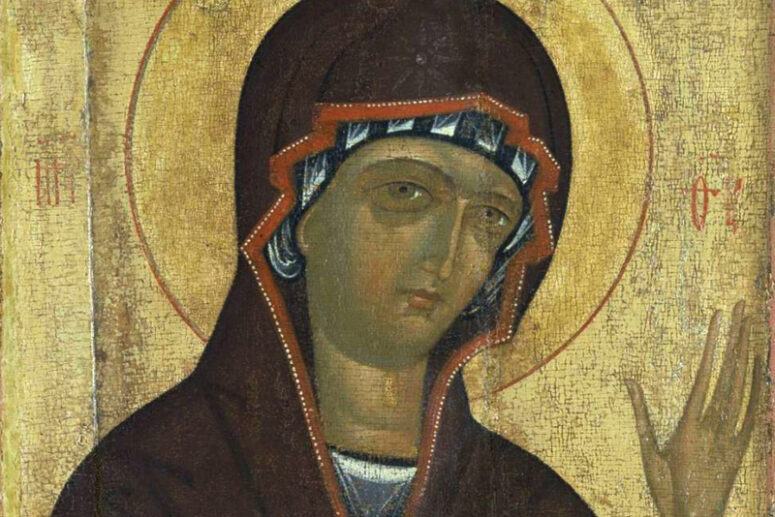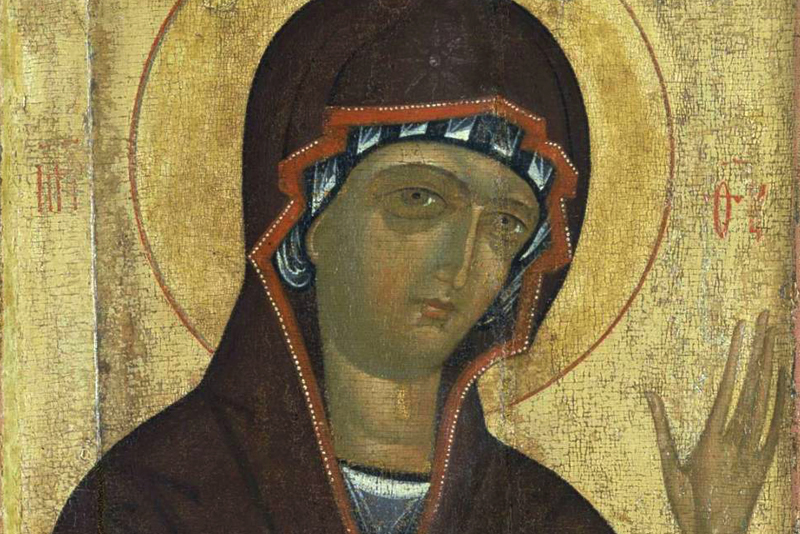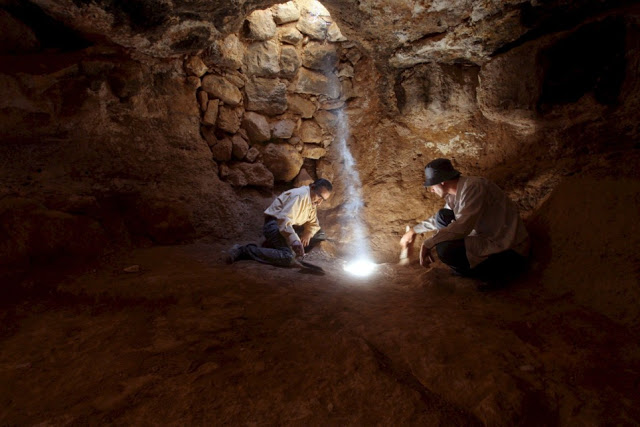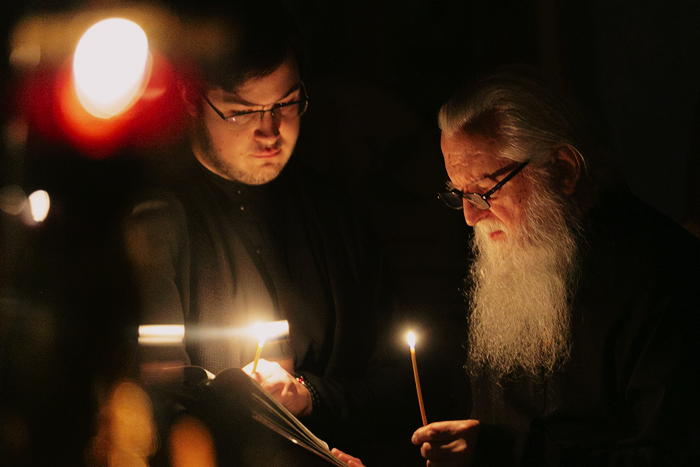
November can be rightly called “the month of the Theotokos”. It is interspersed with holidays of the revered icons of the Mother of God, such as the “Kazan” icon, “Joy of All Who Sorrow” and “Quick to Hearken”. Many prayers to the Most Holy Theotokos are sung during the services on these days. Generally speaking, prayers to the Mother of God play a special part in Orthodox services. Let us take a short tour into the past and see how ancient Christians prayed to the Mother of God.
The prayer “Running for refuge under thine, О Sovereign-Lady, shelter” is probably the most ancient known hymn to the Mother of God. It was discovered for the first time in a 3rd century papyrus and is therefore used in both the Orthodox and Catholic Churches. The no less ancient hymn “O Theotokos, Virgin, rejoice” refers to the Angel’s greeting to the Theotokos on the Annunciation day and the exclamation of the righteous Elizabeth during her meeting with the Holy Virgin (see Luke 1). The first evidence of this hymn being used in divine services is also found in the papyri discovered in the Egyptian city of Luxor. This chant is also widely spread in both Orthodox and Western (the “Hail Mary”) worship.
Bethlehem, Nazareth and Jerusalem were originally considered places where special veneration was given to the Holy Virgin, since these cities in the Holy Land were associated with Her earthly life. At some point these cities were “joined” by the capital of the Roman Empire, Constantinople, also becoming the place of special veneration of the Mother of God. Many relics and icons of the Theotokos have been brought here, giving birth to the popular belief of Constantinople being under Her special patronage. It was here that the outstanding church composer St Romanos the Melodist lived and worked. He wrote the most ancient hymns, sung on the feasts associated with the Mother of God (Annunciation, Meeting of the Lord and Nativity). These hymns were called kontakia. “Kontakion” literally translates from Greek as “a scroll”. Most likely, this name was influenced by the fact that kontakia were originally prayer poems consisting of many lines and written on scrolls. The word “kontakion” has survived to this day, but now we use it only for the first stanza of these ancient poems. Kontakia of many Orthodox feasts in honor of the Mother of God were written by St Roman.
However, one ancient kontakion has survived to our time unabridged. It is the Akathist to the Mother of God, or the Great Akathist. Today we use the word Akathist to define a whole genre of chants, but for many centuries the Akathist to the Mother of God has been the only one existing in the Church. We do not know the exact time of its writing. Some consider it one of St Roman’s works, while others attribute it to a monothelite heretic, Patriarch Sergius. It may seem strange, but the famous opening part of the Akathist (“To Thee o Champion Leader”), is not connected with its main content and was added to it in the 8th century. Many researchers also believe that the part with the repeated “Rejoice” was also added to the Akathist some time after it had been written.
The Akathist consists of 24 stanzas. In the Slavic tradition we call them kontakia and ikoi, while the Greek tradition refers to them merely as ikoi. This number of stanzas is derived from the number of letters in the Greek alphabet. The first stanza of the original version begins with the word “Angel”. The first word of each new stanza begins with the following letter of the alphabet, thus forming an alphabetic acrostic.
The canons in honor of the Mother of God appeared later (in the 8th century) and began to gradually supplant the ancient kontakia. The canon is associated with the chant “It is truly meet”, one of the most famous hymns to the Mother of God. It consists of two separate hymns. The first one begins with “It is truly meet”, and the second one begins with “More honorable than the Cherubim”. The second hymn is the irmos from the 9th song of the three-odes canon, sung on Great and Holy Friday. Its author is St Cosmas of Maiuma. Besides being part of “It is truly meet”, this hymn (“More honorable than the Cherubim”) also serves as a refrain to the Gospel song of the Theotokos “My soul magnifies the Lord”, opening the 9th song of the Matins canon on most days of the church year. Also, this hymn is widely used as a separate prayer, often concluding services or their parts. The first part of the hymn “It is truly meet”, according to Church Tradition, has a divine origin. A certain rassophore monk living in his cell on Mount Athos was once visited by a pilgrim monk. In the hour before dawn, when both monastics were performing divine services, the visitor prefaced the “More honorable than the Cherubim” with an unknown hymn “It is truly meet”. The beauty of the chant amazed the rassophore. At his request, his guest miraculously captured the words of the chant on a stone slab and, instructing him to always follow this pattern, disappeared. According to Church Tradition, this pilgrim monk was the Archangel Gabriel.
Of course, we have only been able to briefly touch upon the liturgical heritage of the Church, dedicated to the Mother of God. However, even such a short excursus well verifies the words spoken by the Mother of God Herself, “Surely, from now on all generations will call Me blessed” (Luke 1:48).
Alexander Adomenas, Master of Theology
Translated by The Catalogue of Good Deeds
Source: https://pravlife.org/ru/content/kak-molilis-bogorodice-drevnie-hristiane




